| |
|
|
|
|
|
|
|
|
|
|
| |
| |
 |
|
| |
田润德
编译文/图 2020-10-18
20:36 |
|
| |
|
|
|
|
| |
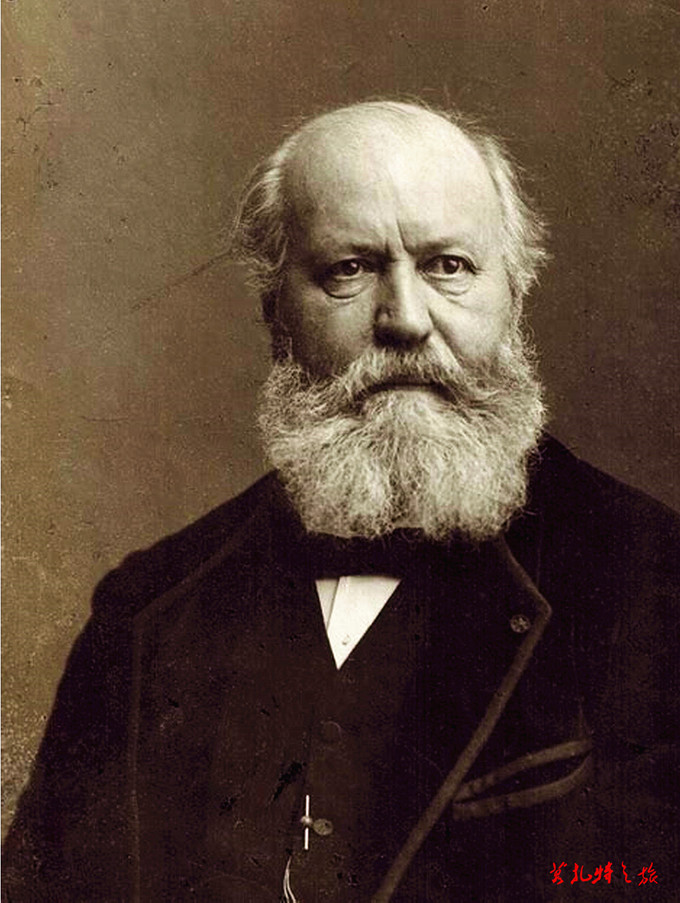 |
|
|
|
| |
查尔斯·弗朗索瓦·古诺(Charles Francois
Gounod,1818-1893) |
|
|
|
| |
|
|
| |
中美在线音乐会,田元&爸爸 演奏巴赫-古诺 圣母颂
|
|
|
|
| |
《圣母颂》,原是法国著名作曲家古诺的声乐名曲,为了纪念古诺逝世127周年,田元和爸爸一个在美国费城,一个在中国哈尔滨,远隔太平洋,时空交错地实现了精美的对接,更加体现了古诺崇高的艺术理想。借《圣母颂》的作品的精美构思,一切对亲人的思念,对艺术的追求都蕴含在巴赫隽永
虔诚的节奏和古诺飘逸灵动的旋律及和声当中。(后期合成制作田元) |
|
|
|
| |
"Ode to the Virgin",
originally a famous vocal piece by the renowned French composer Gounod,
was composed to commemorate the 127th anniversary of Gounod's death.
Tian Yuan and his father, one in Philadelphia, USA, and the other in
Harbin, China, were separated by the Pacific Ocean. Despite the vast
distance, they achieved a beautiful connection in time and space,
further highlighting Gounod's lofty artistic ideals. Through the
exquisite conception of the "Ode to the Virgin" composition, all
thoughts of loved ones and pursuits of art are embodied in Bach's
profound and devout rhythm, as well as Gounod's elegant and dynamic
melodies and harmonies. (Later post-production by Tian Yuan) |
|
|
|
| |
|
|
|
|
| |
音乐历史上的今天
1893年10月18日,早晨6点25分,查尔斯.古诺离开了人间,享年75岁。他之前已经昏迷了两天,但手中始终握着十字架。
查尔斯·弗朗索瓦·古诺(Charles Francois
Gounod,1818-1893),法国作曲家,1818年6月18日生于巴黎﹐1893年10月18日卒于圣克卢。父亲是画家﹐曾获罗马大奖赛第
2名。母亲是钢琴家。古诺自幼从母亲学音乐﹐后来又拜作曲家A.雷哈为师﹐在上大学之前已具有相当高的音乐修养﹐同时还学习美术。
古诺1836年入巴黎音乐学院﹐从阿莱维﹐E.L.学对位法﹐从勒絮尔﹐J.-F.学作曲﹐从A.齐默尔曼学钢琴。入学第2年即获罗马大奖第2名﹐1839年获罗马大奖第1名。同年赴罗马进修。1841年5月1日﹐他的第1部重要作品《三声部弥撒曲》在罗马上演。1842年秋离罗马回国﹐沿途访问了维也纳﹑柏林等地﹐接触到各国音乐的优秀作品和著名人物。在莱比锡受到门德尔松﹐F.的热情接待﹐亲自为他演奏和讲解巴赫的管风琴作品。这些活动对古诺日後的创作产生了深刻影响。回到巴黎后,曾任教堂管风琴师和歌队指挥。1852年任巴黎最大的男声合唱团──“奥费翁合唱团”的指挥。1858年到抒情剧院工作﹐在这里他写出了第1批成功的歌剧作品﹐其中包括使他名垂后世的《浮士德》(1859)。由于普法战争的影响﹐1870年9月古诺携全家避居英国。由于维多利亚女王十分欣赏《浮士德》而得宠于王室﹐一度是英国音乐生活中的红人。1874年6月返回法国﹐不间断地创作直至去世。
创作生涯
古诺早年热心於宗教﹐在罗马期间﹐西斯廷教堂的歌声﹐尤其是帕莱斯特里纳﹐G.P.da作品中的复调音乐手法﹐对他产生了深刻的影响。这个时期的作品﹐几乎全部是宗教题材的﹐其中1855年11月22日首演的《圣塞西勒庆典弥撒曲》概括了这一阶段的风格特征﹕古朴的复调风格中加入了热情的气质﹐经常用半音转调加以修饰和扩展的收束式﹐严谨的曲调与织体中透露出丰富﹑灵活的戏剧性手法﹐并使用了独唱和管弦乐队。这是一种华丽和热情﹐却又不失其真诚﹑质朴的风格。这部作品是对宗教音乐的一次改革。
离开神学院之后﹐古诺的注意力就转向歌剧方面。他的第1部歌剧《萨福》於1851年首演﹐并不成功。1852年上演的第
2部歌剧《残酷的修女》明显地模仿迈耶贝尔﹐G.的大歌剧﹐也归于失败。此后他逐渐摈弃了虚饰浮华的大场面﹐摆脱了统治法国歌剧30年之久的迈耶贝尔模式的影响﹐确立了自己的质朴而柔美多情的风格。
虽然古诺在宗教音乐和器乐领域都有卓越的才能﹐也都有成功的作品﹐但人们主要将他看作一个熟谙声乐及曲调艺术的歌剧作曲家﹐其代表作品是《浮士德》。
《浮士德》是典型的抒情歌剧﹐剧本作者巴比埃和卡雷只采用了歌德原诗的第一节和女主角玛格丽特与浮士德的爱情悲剧。在这部作品中﹐古诺使用的现实主义的﹑丰富多变而又自然的表现手法﹐用音乐刻划人物性格的高超技巧﹐符合时代潮流的﹑较为通俗的曲调﹐色彩丰富的和声与配器﹐以及富有戏剧性的情节等等﹐都是在大歌剧中所少见的。後来古诺又将道白改为朗诵调﹐增添了芭蕾舞场面﹐于1869年起由巴黎歌剧院演出﹐从此成为最受欢迎的歌剧之一。此外﹐他的著名歌剧还有根据莎士比亚剧本改编的《罗密欧与朱丽叶》。
作品风格
古诺的创作发挥了法国音乐优雅﹑清晰﹑匀称﹑洗练﹑真挚的特长﹐其艺术观点代表著新兴资产阶级的理想和追求。就音乐范畴而言﹐他是个眼界开阔的创新人物﹔在技术能力上﹐法国作曲家中难得有人能与之匹敌。但他在政治上﹑美学上有保守主义倾向﹐加之对宗教的沉迷和个性上的软弱﹐限制了他的发展前途。其晚年创作暴露出因袭的迹象﹐当年的质朴变成了平庸。他对比才﹐G.﹑马斯内﹐J.﹑以至德彪西﹐C.和柴科夫斯基﹐..等後来作曲家的影响很大。除大量的歌剧而外﹐他的作品大多为各种形式的宗教音乐﹐包括现今最流行的《圣母颂》(Ave
Maria)。
今日视频:1、田元和爸爸演奏巴赫-古诺《圣母颂》;2、合唱 - 巴赫、古诺《圣母颂》;古诺歌剧《浮士德》大都会歌剧院2011。
|
|
|
|
| |
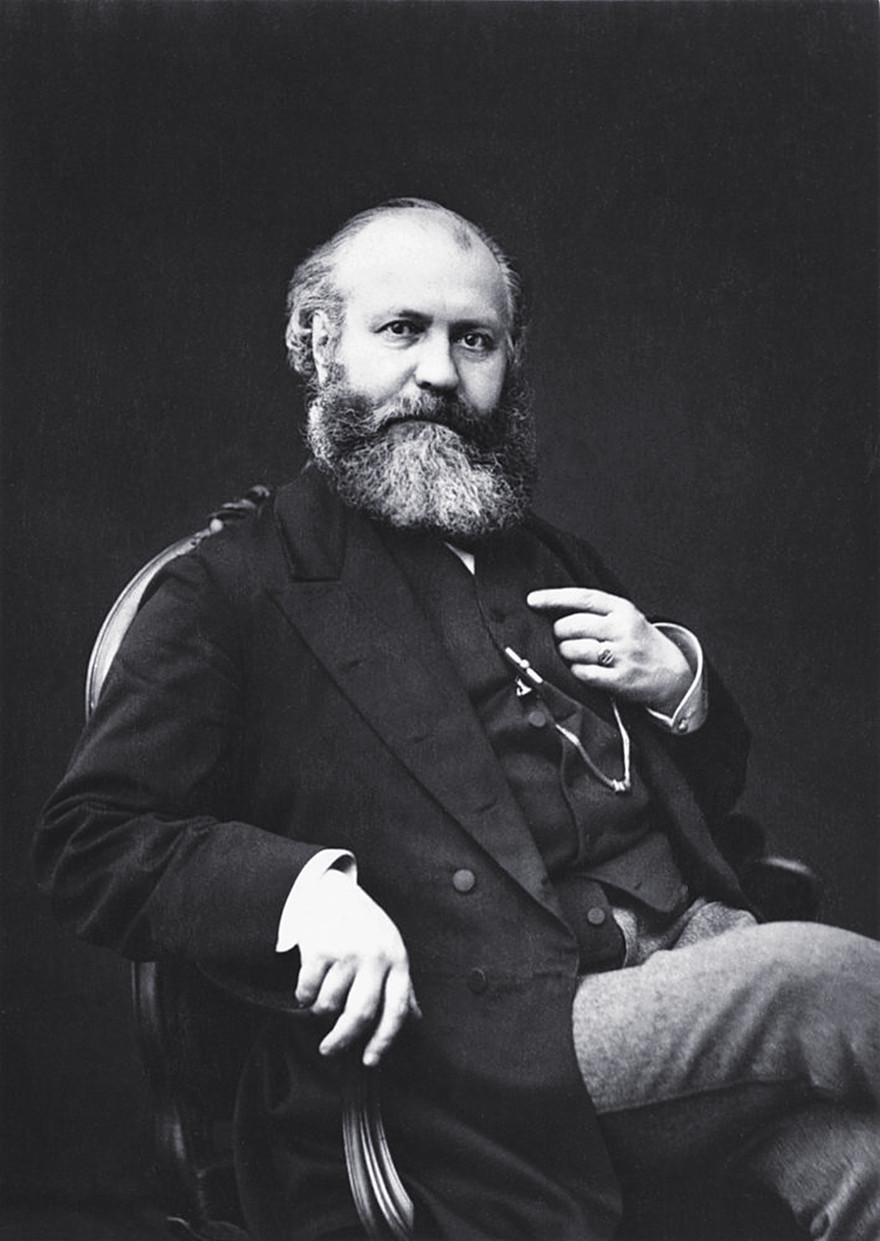 |
|
| |
查尔斯·弗朗索瓦·古诺(Charles Francois
Gounod) |
|
|
|
| |
查尔斯·古诺(1818年6月17日生于法国巴黎,1893年10月18日死于巴黎附近的圣克鲁),法国作曲家,以其歌剧著称,其中最著名的是《浮士德》。
古诺的父亲是一位画家,他的母亲是一位有能力的钢琴家,是她给了古诺早期的音乐训练。他在圣路易中学接受教育,一直到1835年。在获得哲学学位后,他开始与波西米亚作曲家安东·赖卡(Anton
Reicha)学习音乐。赖莎死后,古诺进入巴黎音乐学院,师从哈里维和让-弗朗索瓦·勒苏埃。三年后,他的《弗尔南多》大合唱为他赢得了罗马音乐奖,他不得不在罗马的美第奇别墅呆了三年。
在意大利,古诺把大量的精力投入到意大利文艺复兴作曲家乔瓦尼·达·帕莱斯特里纳的作品中。1842年和1843年,在意大利创作的弥撒和安魂曲在维也纳举行了演出。回到巴黎后,他经过布拉格、德累斯顿和柏林,在莱比锡遇见了费利克斯·门德尔松。
古诺的父亲是一位画家,他的母亲是一位有能力的钢琴家,是她给了古诺早期的音乐训练。他在圣路易中学接受教育,一直到1835年。在获得哲学学位后,他开始与波西米亚作曲家安东·赖卡(Anton
Reicha)学习音乐。赖莎死后,古诺进入巴黎音乐学院,师从哈里维和让-弗朗索瓦·勒苏埃。三年后,他的《弗尔南多》大合唱为他赢得了罗马音乐奖,他不得不在罗马的美第奇别墅呆了三年。
在意大利,古诺把大量的精力投入到意大利文艺复兴作曲家乔瓦尼·达·帕莱斯特里纳的作品中。1842年和1843年,在意大利创作的弥撒和安魂曲在维也纳举行了演出。回到巴黎后,他经过布拉格、德累斯顿和柏林,在莱比锡遇见了费利克斯·门德尔松。
对他最早的歌剧《Sapho》(1851)和《La Nonne
sanglante》(1854)的接受;尽管作曲家赫克托尔·柏辽兹对《血腥修女》给予了好评,但他的作品并不十分热情。在他的圣塞西尔展览(1855)中,他试图将神圣与更世俗的创作风格相融合。在1858年的《马格里路的医生》(Le
Medecin malgre
lui)之后,他开始了对喜剧的探索。《模拟医生》,根据莫里哀的喜剧改编。从1852年开始,古诺就在写《浮士德》,根据J.W.冯·歌德的悲剧改编了M.
Carre和J.
Barbier的剧本。1859年3月19日的《浮士德》标志着法国歌剧发展的一个新阶段。这一作品继续掩盖了Gounod随后的所有阶段作品,包括《菲利蒙和鲍吉斯》(1860)、《拉科伦坡》(1860;《鸽子》),相当成功的《米雷耶》(1864年),改编自弗雷德里克·米斯特拉尔的一首普罗旺斯诗歌,以及《罗密欧与朱丽叶》(1867年)。
1852年,古诺成为巴黎奥菲恩合唱协会的指挥,他为该协会写了许多合唱作品,包括两场弥撒。从1870年起,他在伦敦呆了五年,组建了一个以他的名字命名的唱诗班(后来成为皇家合唱协会),并把自己几乎全部投入到清唱剧的创作中。《加利亚》是一首为女高音独唱、合唱和管弦乐所作的哀歌,灵感来自于1870年法国军队的战败,它于1871年首次演出,随后在1882年和1885年又上演了《救赎》和《生与死》。1888年,他被授予荣誉军团勋章。
毫无疑问,古诺的旋律是原创的,尽管经常有些过头。他知道如何为人声写作,也是一个熟练的管弦乐手;但在他的歌剧中,他对音乐的刻画虽然不乏魅力,但往往过于肤浅,在他的神圣音乐中所表现的宗教虔诚也往往过于肤浅。他的冥想(圣母颂)与约翰·塞巴斯蒂安·巴赫的《C大调序曲》(选自《和谐键盘》第一卷)叠在一起,展现了他作为一个旋律家的创造力和轻松,以及他在风格方面的天真。歌剧《浮士德》、《米雷耶》和《梅德金·马尔格里·卢伊》充分展示了他的最佳旋律天赋。 |
|
|
|
| |
 |
|
| |
LOT 2077 古 诺(Charles Gounod,1818~1893) 华兹华斯诗《小科伦比恩》二重唱亲笔完整手稿2077 |
|
|
|
| |
Lot 2077 Ancient No (Charles
Gounod, 1818 - 1893) Autograph Complete Manuscript of the Original
Chorus of Wordsworth's Poem "Little Corbinian" 207 |
|
|
|
| |
古 诺(Charles Gounod,1818~1893)华兹华斯的诗作《小科伦比恩》二重唱亲笔完整手稿乐谱
一张四页(附证书)1872、1875年作流传:法国德鲁奥拍卖行(Hotel
Drouot),1963年。说明:此为古诺二重唱《小白屈菜(Little Celandine)》完整稿本。《小白屈菜》为英国浪漫主义诗人威廉
华兹华斯(William
Wordsworth)的一首诗歌,古诺对其进行改编,由黑色墨水标注女高音、女低音以及钢琴部分,并于1875年由Goddard在伦敦出版。封面有古诺亲笔书写提要并签名。1870年至1874年间古诺曾旅居英格兰,并担任皇家合唱协会第一指挥,他的大部分音乐创作就是从这个时候开始的。CHARLES
GOUNOD AUTOGRAPH MANUSCRIPT OF LITTLE CELANDINE THE DUOFour pagesDated
1872 and 187554×35cmRMB: 40,000-60,000作者简介:古诺(Charles
Gounod,1818~1893),法国作曲家。生于巴黎,巴黎音乐学院毕业,后至罗马进修,曾在莱比锡受门德尔松热情接待。回巴黎后为教堂管风琴师和歌队指挥、奥费翁合唱团指挥。1870年移居英国,得宠于王室。其《教皇进行曲》被采用为梵蒂冈国歌。代表作有《圣母颂》、抒情歌剧《浮士德》等。 |
|
|
|
| |
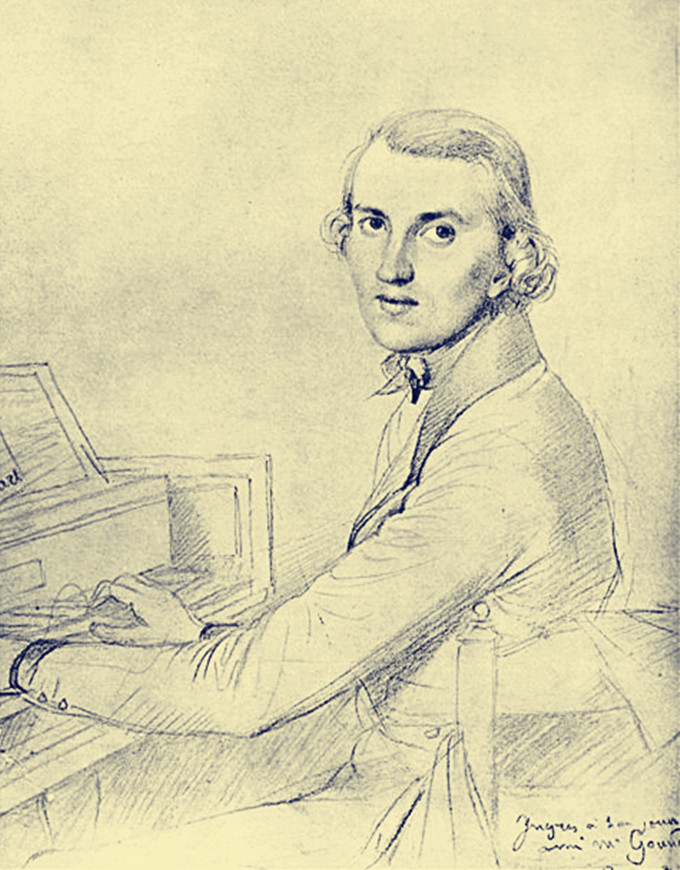 |
|
| |
年轻的查尔斯·弗朗索瓦·古诺(Charles
Francois Gounod) |
|
|
|
| |
Guo Nuo
(Charles Gounod, 1818 - 1893) Autograph Complete Score of the Duofour
Version of Wordsworth's Poem "Little Columbine" One sheet (with
certificate) 4 pages (dated 1872 and 1875), 54×35 cm. Acquired in 1963
from the Hotel Drouot, France. Description: This is the complete
manuscript of Guo Nuo's duofour version of "Little Columbine". "Little
Columbine" is a poem by the British Romantic poet William Wordsworth.
Guo Nuo adapted it and marked the parts for soprano, contralto and piano
with black ink. It was published by Goddard in London in 1875. The cover
has Guo Nuo's handwritten summary and signature. From 1870 to 1874, Guo
Nuo lived in England and served as the first conductor of the Royal
Chorus Society and the commander of the Ophion Chorus. Most of his
musical compositions began from this period. BIOGRAPHY: Guo Nuo (Charles
Gounod, 1818 - 1893), a French composer. Born in Paris, graduated from
the Paris Conservatory, and later studied in Rome. He was warmly
received by Mendelssohn in Leipzig. After returning to Paris, he was a
church organist and choir conductor, as well as the commander of the
Ophion Chorus. In 1870, he moved to England and was favored by the royal
family. His representative works include "The Papal March" which was
adopted as the anthem of the Vatican.
|
|
|
|
| |
 |
|
|
|
| |
作曲家查尔斯-弗朗索瓦·古诺的画像 |
|
|
|
| |
Portrait du compositeur
Charles-François Gounod |
|
|
|
| |
 |
|
|
|
| |
查尔斯-弗朗索瓦·古诺 由伦敦立体摄影与摄影公司拍摄的个人名片照片,[约 1872
年]。 |
|
|
|
| |
Carte de visite photograph by
the London Stereoscopic & Photographic Company, [c.1872]. |
|
|
|
| |
 |
|
|
|
| |
查尔斯-弗朗索瓦·古诺(1818 - 1893)
2018 年 10 月(生于巴黎,1818 年 6 月 17 日;卒于圣克卢,1893 年 10 月 18 日)今年夏天恰逢古诺诞辰两百周年。在此,我们展示了一些与他 1870 至 1874 年在伦敦期间相关的内容。 |
|
|
|
| |
Charles-François GOUNOD (1818-1893)
October 2018(b.Paris, 17 June 1818; d.Saint-Cloud, 18 October 1893)
The bicentenary of Gounod’s birth fell this summer. We show here a few
items relating to his years based in London, 1870-1874. |
|
|
|
| |
 |
|
|
|
| |
查尔斯·弗朗索瓦·古诺德 /n(1818 -
1893)。法国作曲家。 |
|
|
|
| |
CHARLES FRANCOIS GOUNOD
/n(1818-1893). French composer. |
|
|
|
| |
 |
|
|
|
| |
查尔斯·弗朗索瓦·古诺德 /n(1818 -
1893)。法国作曲家。木刻版画,1891 年。
CHARLES FRANCOIS GOUNOD /n(1818-1893). French composer. Wood engraving,
1891. |
|
|
|
| |
|
|
|
|
| |
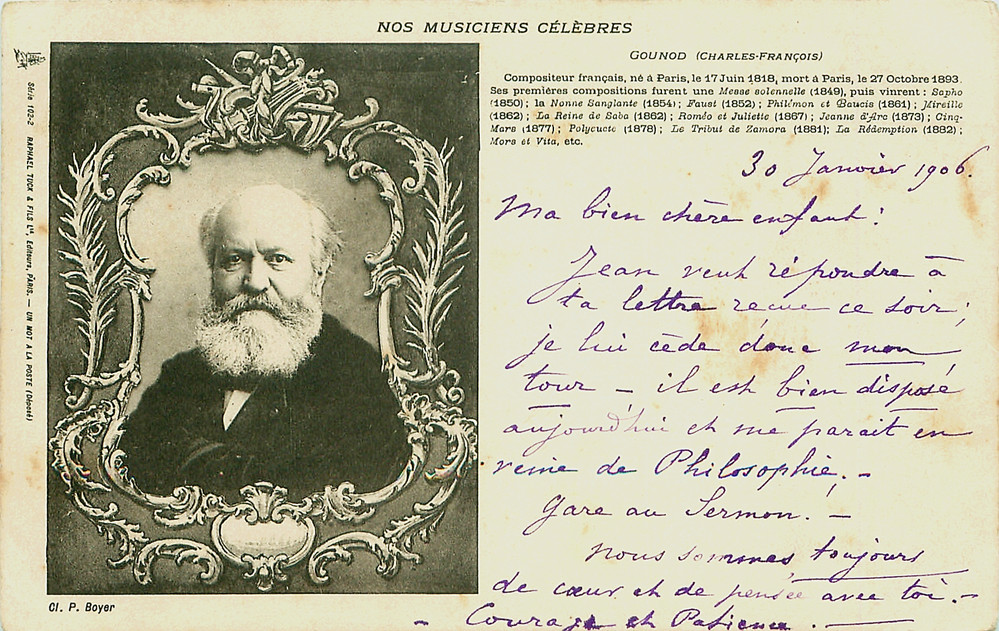 |
|
| |
著名的作曲家古诺(查尔斯-弗朗索瓦) 法国作曲家,于
1818 年 6 月 17 日出生于巴黎,1888 年 10 月 27 日在巴黎去世。 他的早期作品包括一部庄严的弥撒曲(1849
年),随后还有:萨(1850 年);血淋淋的修女(1854 年);浮士德(1852 年);菲勒蒙与鲍克西斯(1861 年);交响曲(1862
年);撒巴女王(1862 年);罗密欧与朱丽叶(1867 年);珍妮·德·阿雷(1873 年);火星(1877 年);波利尤克特(1878
年);萨莫拉的贡赋(1881 年);救赎(1888 年);死亡与生命等等。 |
|
|
|
| |
NOS MUSICIENS CÉLÈBRES GOUNOD
(CHARLES-FRANÇOIS) Compositeur français, né a Paris, le 17 Juin 1818,
mort a Paris, le 27 Octobre 18 Ses premieres compositions furent une
Messe solennelle (1849), puis vinrent: Sa (1850); la Nonne Sanglante
(1854); Faust (1852); Philémon et Baucis (1861); JAire (1862); La Reine
de Saba (1862); Roméo et Juliette (1867); Jeanne d'Are (1873); C: Mars
(1877); Polyeucte (1878); Le Tribut de Zamora (1881); La Rédemption (188
Mors et Vita, etc. |
|
|
|
| |
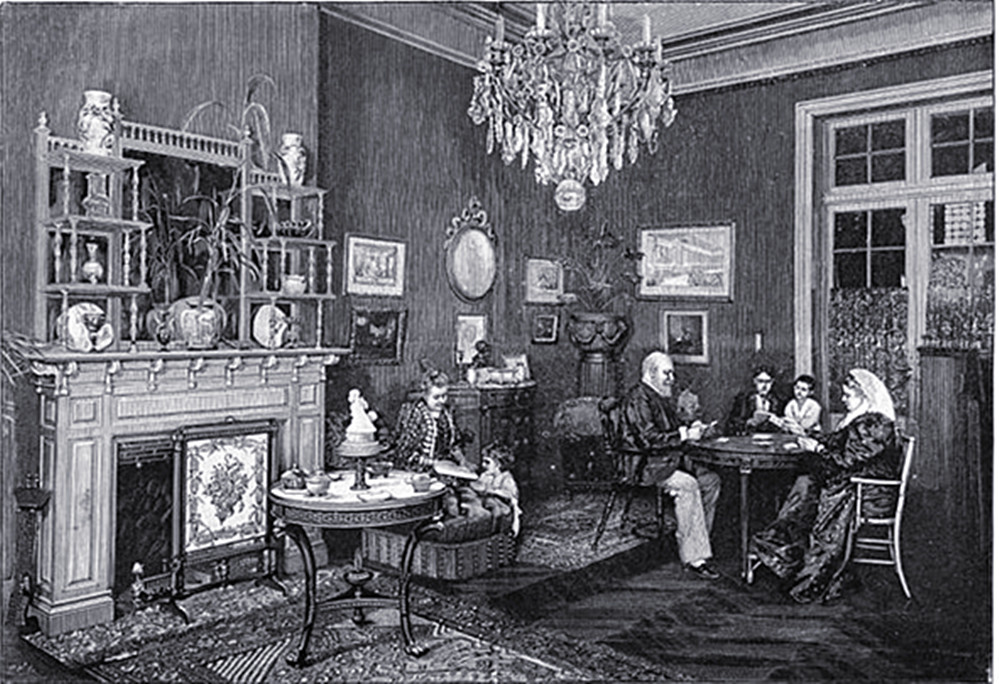 |
|
| |
查尔斯·弗朗索瓦·古诺(Charles Francois
Gounod)一个平静的家庭 |
|
|
|
| |
Charles
Francois Gounod |
|
|
|
| |
Charles Gounod, in
full Charles-françois Gounod, (born June 17, 1818, Paris, France—died
Oct. 18, 1893, Saint-Cloud, near Paris), French composer noted
particularly for his operas, of which the most famous is Faust.
Gounod’s father was a painter, and his mother was a capable pianist who
gave Gounod his early training in music. He was educated at the Lycée
Saint-Louis, where he remained until 1835. After taking his degree in
philosophy, he began to study music with the Bohemian composer Anton
Reicha. On Reicha’s death Gounod entered the Paris Conservatoire, where
he studied under Fromental Halévy and Jean-François Lesueur. Three years
later his cantata Fernand won him the Prix de Rome for music, an award
that entailed a three-year stay in Rome at the Villa Medici.
In Italy Gounod devoted a considerable amount of his attention to the
works of Giovanni da Palestrina, an Italian Renaissance composer. From
Rome he proceeded to Vienna, where a mass and requiem, composed in
Italy, were performed in 1842 and 1843. Returning to Paris, he passed
through Prague, Dresden, and Berlin and met Felix Mendelssohn in
Leipzig.
Gounod’s father was a painter, and his mother was a capable pianist who
gave Gounod his early training in music. He was educated at the Lycée
Saint-Louis, where he remained until 1835. After taking his degree in
philosophy, he began to study music with the Bohemian composer Anton
Reicha. On Reicha’s death Gounod entered the Paris Conservatoire, where
he studied under Fromental Halévy and Jean-François Lesueur. Three years
later his cantata Fernand won him the Prix de Rome for music, an award
that entailed a three-year stay in Rome at the Villa Medici.
In Italy Gounod devoted a considerable amount of his attention to the
works of Giovanni da Palestrina, an Italian Renaissance composer. From
Rome he proceeded to Vienna, where a mass and requiem, composed in
Italy, were performed in 1842 and 1843. Returning to Paris, he passed
through Prague, Dresden, and Berlin and met Felix Mendelssohn in
Leipzig.
The reception of his earliest operas, Sapho (1851) and La Nonne
sanglante (1854; “The Bloody Nun”), was not very enthusiastic, despite
favourable reviews by the composer Hector Berlioz. In his Messe de
Sainte-Cécile (1855) he attempted to blend the sacred with a more
secular style of composition. An excursion into comic opera followed
with Le Médecin malgré lui (1858; The Mock Doctor), based on Molière’s
comedy. From 1852 Gounod worked on Faust, using a libretto by M. Carré
and J. Barbier based on J.W. von Goethe’s tragedy. The production of
Faust on March 19, 1859, marked a new phase in the development of French
opera. This work has continued to overshadow all of Gounod’s subsequent
stage works, including Philémon et Baucis (1860), La Colombe (1860; “The
Dove”), the fairly successful Mireille (1864), based on a Provençal poem
by Frédéric Mistral, and Roméo et Juliette (1867).
In 1852 Gounod had become conductor of the Orphéon Choral Society in
Paris, for which he wrote a number of choral works, including two
masses. From 1870 he spent five years in London, formed a choir to which
he gave his name (and which later became the Royal Choral Society), and
devoted himself almost entirely to the writing of oratorios. Gallia, a
lamentation for solo soprano, chorus, and orchestra, inspired by the
French military defeat of 1870, was first performed in 1871 and was
followed by the oratorios La Rédemption and Mors et Vita (Life and
Death) in 1882 and 1885. He was made a grand officier of the Legion of
Honour in 1888.
Gounod’s melodic vein is unmistakably original, though often
oversentimental. He knew how to write for the voice and was also a
skillful orchestrator; but in his operas his sense of musical
characterization, though rarely devoid of charm, is often excessively
facile, and the religiosity displayed in his sacred music is too often
superficial. His Meditation (Ave Maria) superimposed on Johann Sebastian
Bach’s Prelude in C Major (from The Well-Tempered Clavier, Book I)
illustrates both his inventiveness and ease as a melodist and his
naïveté in matters of style. The operas Faust, Mireille, and Le Médecin
malgré lui show his melodic talents at their best. |
|
|
|
| |
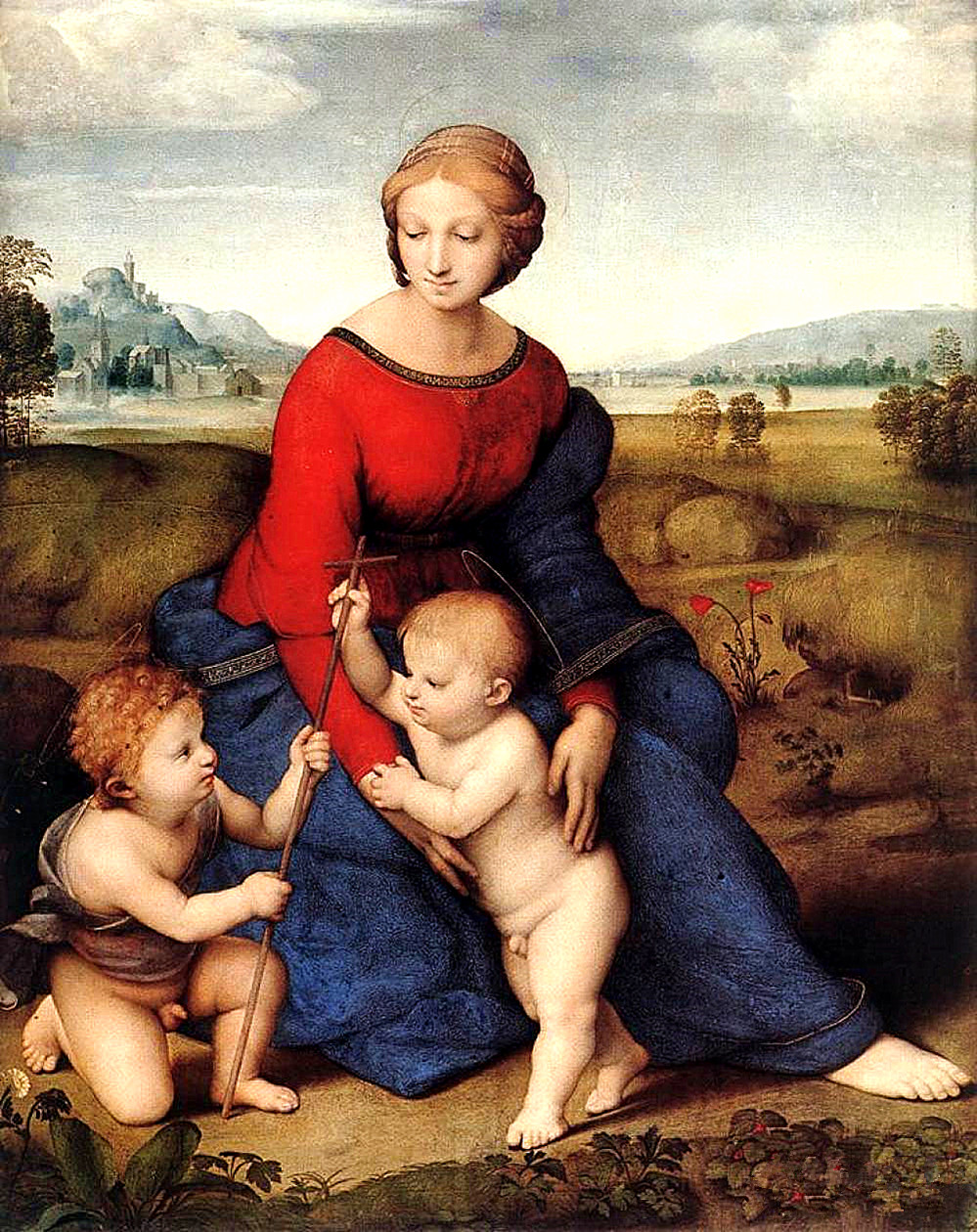 |
|
| |
《草地上的圣母》拉斐尔(Raphael) |
|
|
|
| |
"Madonna on the Grass" by
Raphael |
|
|
|
| |
拉斐尔·桑西(Raffaello
Santi,全名Raffaello Sanzio da
Urbino,1483年3月28日或4月6日—1520年4月6日),常称为拉斐尔(Raphael),意大利著名画家,也是“文艺复兴后三杰”中最年轻的一位,代表了文艺复兴时期艺术家从事理想美的事业所能达到的巅峰。
十六世纪之前,一说起圣母,信徒的脑海中会出现各种各样的形象,有的死板,有的慈祥,有的悲戚,有的欢乐。拉斐尔这幅《草地上的圣母》一出,迅速变成了她的标准像。
画中的她,慈爱,祥和,平静。多日劳作的人看到她,身体上的疲劳几乎瞬间消失;罪孽深重的人看到她,愿意在她面前坦诚自己的罪,并相信自己一定能得到宽恕;涉世未深的年轻人看到她,增加了面对无常世事的信心;行将就木的人看到她,也就不再畏惧那未知的天堂。
栩栩如生的效果,来自拉斐尔妙到毫巅的技法和反反复复的探索。这圣母的脸,是理想化的脸,画中的风景,也是理想化的现实。
拉斐尔笔下的色彩,产生了发光的效果。以颜色明暗的变化,让画中事物的边缘有阴影,让事物的中间有高光。同时这又产生色彩振动的效果:画面左边圣母的红色上衣与绿色草地、右边黄色土地与蓝色袍子,这些互补色互相映衬,构成和谐。
这幅画又是几何形状的集合:圣母头上的光晕、她的发髻、她的领口、袖口上的金线,圣约翰和耶稣头上的光晕,都是圆形;而三个主要人物的构图、圣约翰和十字架、耶稣和圣母的右手,这又都是三角形。包容的圆形和稳定的三角形,让观者对圣母和耶稣充满信任和敬仰。
这幅画集不同形式的美之大成,理想的人体、充沛的光线、简约的构图、和谐的秩序,一切的一切都在告诉观者:来吧,拜倒这三位一体之前,这就是你的救赎。 |
|
|
|
| |
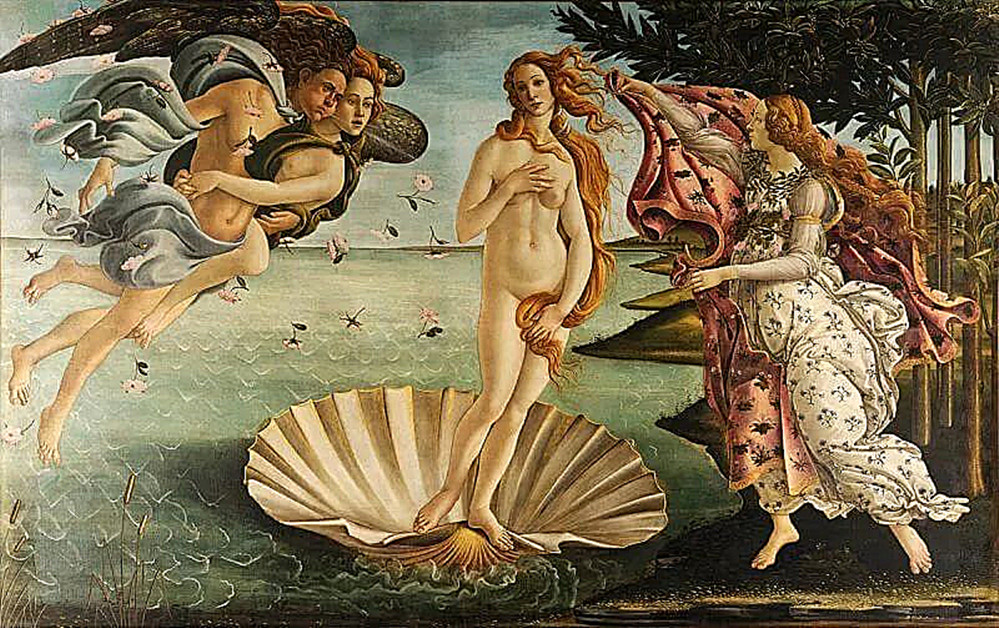 |
|
| |
波提切利 《维纳斯的诞生》
|
|
|
|
| |
Botticelli, "The Birth of
Venus" |
|
|
|
| |
画面中,在波光粼粼的爱琴海上,花瓣从天空坠落。裸体的维纳斯略显娇弱无力地站在一个大贝壳上,她微曲右腿,身体向右微微倾斜,一头金色长发被海风轻轻吹散。她的皮肤光洁剔透,美丽的面庞略显出某种淡淡的迷惘。那双纯真无邪的眼睛,笼罩着一种脉脉的忧郁和哀怨,显示出她刚刚来到这个世界的无助和迷茫。维纳斯的脖子和双手显得长了一些,但这更增加了她的优雅和风韵。画面的左上方,长着翅膀的风神正鼓起双唇把维纳斯徐徐吹向岸边,那里,来迎接她的春之女神身着华丽服装,正准备把一件缀满鲜花的红色披风披到她裸露的身上
这幅画很多人都不陌生,乌菲齐美术馆的馆藏目录是这样介绍的:维纳斯被描绘成一个年轻的女子,乘着贝壳在波浪起伏的海面上荡漾而来,一路来到塞浦路斯的浅滩,左边的两位相拥着的西风之神的推动着她,岸边穿着花裙的春神把披肩递给维纳斯保护她。
作者波提切利(1445-1510),佛罗伦萨画派的最后一位画家,1487年,波提切利被要求为佛罗伦萨统治者梅第奇家族的一个远房兄弟创作一幅画用于装饰别墅。 |
|
|
|
| |
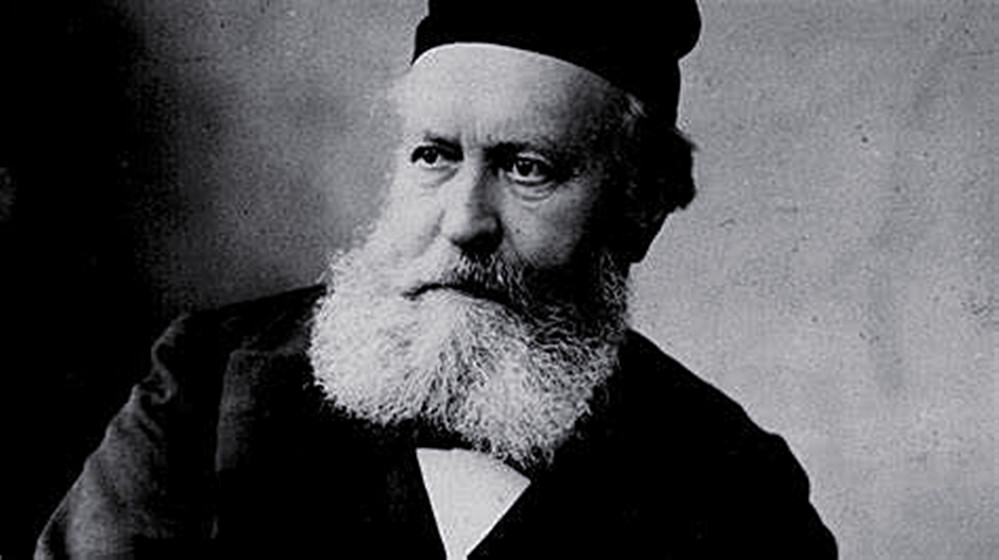 |
|
| |
查尔斯·弗朗索瓦·古诺(Charles Francois Gounod,1818-1893) |
|
|
|
| |
巴赫-古诺《圣母颂》("Ave
Maria" ) |
|
|
|
| |
这首常用于小提琴独奏的《圣母颂》,原是法国著名作曲家古诺的声乐名曲。
后被改编为小提琴、长笛、大提琴、竖琴独奏曲、管弦乐曲及合唱曲。《圣母颂》系天主教颂歌,歌词较固定。19世纪后出现的《圣母颂》歌词大都由后人创作,如舒伯特的《圣母颂》。古诺袭用教会原用歌词,但在曲名上注有“附在巴赫第一首前奏曲上的宗教歌曲”,即以巴赫的世俗乐曲作为伴奏部分,这说明本曲已不是纯粹的宗教作品。一生往返于教堂、修道院与歌剧院的古诺,在宗教音乐与歌剧方面,有着极其伟大的成就。
乐曲优美动听的主旋律与伴奏声部——巴赫的前奏曲相辅相成,结合得天衣无缝,浑然一体,表现了作者非凡的才华。
古诺于1859年,以巴赫在一百五十年前所作的《C大调前奏曲》(选自巴赫的《平均律钢琴曲集》第一卷)为伴奏,配上了这首世人熟知的歌曲《圣母颂》。这里选用的是改编的小提琴曲。这是一首曲意崇高,旋律优美,跟伴奏吻合得天衣无缝的音乐。创作这样充满宗教美感的乐曲,只有像古诺这样的,具有伟大音乐天才与真诚宗教信仰,并且仔细探究过巴赫音乐之灵魂的音乐家方能为之。原作是一首音域宽广的女高音曲,是采用天主教的圣母祈祷文做为歌词的。本曲被认为是音乐家跨年代合作的典范之作。
乐曲采用行板,4/4拍。一开始轻轻奏出巴赫C大调前奏曲开头。
四小节的分解和弦式音型,形成整个乐曲恬静的基调。随后呈现主旋律。
这一旋律悠长而宽广,犹如缕缕遐思,充满了对未来的憧憬。崇高的情怀,纯净的气氛,随着乐声的流动而深化。乐曲反复一遍之后,在充实的、和谐的气氛中结束。 |
|
|
|
| |
|
|
|
|
| |
 |
|
| |
今天,田元和爸爸远隔太平洋,时空交错地实现了精美的对接,更加体现了古诺崇高的艺术理想。借巴赫-古诺这首《圣母颂》的作品的精美构思,一切对亲人的思念,对艺术的追求都蕴含在深沉的旋律及和声中,本曲被认为是音乐家跨年代合作的典范之作。在今天美国疫情泛滥的今天,田元以及很多留学生的学习和生活都受到了不同程度的影响,我们演奏这首曲目一种更深层的寓意,就是祈祷更多的亲人朋友远离疾病,更加健康更加幸福快乐!更多的人能从新冠病毒的魔爪中挣脱出来,成功融入美好的生活! |
|
|
|
| |
 |
|
|
|
| |
田元和爸爸妈妈在青岛旅游的照片 |
|
|
|
| |
Today, Tian Yuan
and father are far apart from each other in the Pacific Ocean,
spatio-temporal interlacing realized the exquisite docking, more
reflected the noble artistic ideal of the ancient Nuo.By virtue of the
exquisite conception of the works of "Ave Maria", all the yearning for
relatives and the pursuit of art are contained in the deep melody and
harmony, this piece is regarded as a model work of musicians'
cooperation across the ages.In today's epidemic situation in the United
States, Tian Yuan and many overseas students' study and life have been
affected to different degrees. We play this piece of music with a deeper
meaning, that is, we pray for more relatives and friends to stay away
from disease, be healthier and happier!Many more can escape from the
novel Coronavirus and successfully blend into the happy life! |
|
|
|
| |
 |
|
|
|
| |
田元在爸爸指导下练习钢琴 |
|
|
|
| |
|
|
|
|
| |
 |
|
|
|
| |
2011年,田元在中央音乐学院附小读书期间,和爸爸在国家大剧院的欧艺琴声乐器展览上演奏。 |
|
|
|
| |
In 2011, while studying at
the Central Conservatory of Music's affiliated primary school, Tian Yuan
performed with her father at the Ou Yiqin Musical Instruments Exhibition
at the National Grand Theatre. |
|
|
|
| |
"Ave Maria" by
Baker-Gounod
This is often used for violin solo "Madonna", originally is the famous
French composer Gounod vocal music.It has been adapted for violin,
flute, cello, harp solo, orchestra and chorus."Ode to our Lady" is a
Catholic carol with fixed lyrics.Most of the "Madonna" lyrics that
appeared after the 19th century were composed by later generations, such
as Schubert's "Madonna".Cournot adopts the original church lyrics, but
notes "the religious song attached to Bach's first prelude" on the title
of the song, that is, the secular music of Bach as the accompaniment
part, which indicates that this song is no longer a pure religious
work.Cournot, who commuted between church, monastery and opera all his
life, made great achievements in religious music and opera.The melody
and Bach's prelude complement each other in a seamless and integrated
way, showing the author's extraordinary talent.
In 1859, Cournot accompanied the well-known song "Ode to The Virgin"
with Bach's "Prelude in C Major" (from the first volume of Bach's "Piano
Works of Equal Law"), which had been written 150 years earlier.Here is
an adaptation of the violin.It was sublime, melodious, and in perfect
harmony with the accompaniment.Only a musician like Gounod, with great
musical genius and sincere religious faith, who has carefully explored
the soul of Bach's music can create music full of religious beauty.The
original is a soprano with a wide vocal range, which USES the Catholic
Madonna liturgy as the lyrics.This piece is considered a masterpiece of
cross-generational collaboration among musicians.
The music adopts Andante, 4/4 time.At the beginning, the prelude of Bach
C major was played gently.
The four bars of the broken chord form the tranquil tone of the whole
piece.Then comes the main melody.
This melody is long and broad, like continuously daydream, full of
longing for the future.Lofty feelings, pure atmosphere, with the flow of
music and deepening.After the music is repeated over and over, it ends
in a rich and harmonious atmosphere. |
|
|
|
| |
 |
|
|
|
| |
田元一岁的时候和妈妈在松花江畔 |
|
|
|
| |
|
|
|
|
| |
Today in Music
History:
On October 18,
1893, at 6:25 in the morning, Charles Gounod passed away at the age of
75. He had been in a coma for two days, but he always held a cross in
his hand. Charles Francois Gounod (1818-1893), a French composer, was
born in Paris on June 18, 1818, and died in Saint-Cyr on October 18,
1893. His father was a painter and won the 2nd place in the Rome Grand
Prix. His mother was a pianist. Gounod learned music from his mother
since childhood and later studied under the composer A. Rehha. Before
attending university, he already had a considerable musical修养. He also
studied art. Gounod entered the Paris Conservatory in 1836 and studied
counterpoint with A. Le Sueur, composition with J.-F. Le Sueur, and
piano with A. Zimmermann. In the second year of his enrollment, he won
the 2nd place in the Rome Grand Prix and the 1st place in 1839. That
same year, he went to Rome for further studies. On May 1, 1841, his
first important work, "The Three-Part Mass", was performed in Rome. In
the autumn of 1842, he returned to Paris and visited Vienna, Berlin, and
other places along the way, encountering excellent works and famous
figures from various countries. In Leipzig, he was warmly received by
Mendelssohn and F., and personally played and explained Bach's organ
works. These activities had a profound impact on Gounod's later创作. After
returning to Paris, he served as a church organist and choral conductor.
In 1852, he became the conductor of the largest male chorus in Paris -
the "Ophéon Chorus". In 1858, he worked at the Lyric Theatre, where he
wrote his first batch of successful operas, including "Faust" (1859),
which made him famous for posterity. Due to the impact of the
Franco-Prussian War, in September 1870, Gounod and his family fled to
Britain. Queen Victoria of England was very fond of "Faust" and became a
favorite in British musical life. In June 1874, he returned to France
and continued to create until his death. Career: In his early years,
Gounod was enthusiastic about religion. During his time in Rome, the
singing in the Sistine Chapel, especially the polyphonic musical
techniques in the works of Palestrina, G.P.da, had a profound influence
on him. The works from this period were almost all religious-themed, and
the "Celebration Mass for Saint Cecile" premiered on November 22, 1855,
summarized the style characteristics of this stage: the simple
polyphonic style was enriched with passionate temperament, often using
half-tone modulation for embellishment and expansion of the conclusion,
the rigorous melody and texture revealed rich and flexible dramatic
techniques, and the use of solo singing and orchestra. This was a
magnificent and passionate style, yet still sincere and simple. This
work was a reform of religious music. After leaving the seminary,
Gounod's attention turned to opera. His first opera, "Sappho", premiered
in 1851, but was not successful. The second opera he staged in 1852,
"The Cruel Nun", clearly imitated Meyerbeer's grand opera and also
failed. After that, he gradually abandoned the elaborate and flashy
grand scenes and broke away from the influence of the Meyerbeer model
that had dominated French opera for 30 years, establishing his simple
and tender, affectionate style. Although Gounod had outstanding talents
in religious music and instrumental music and had successful works,
people mainly regarded him as a composer of operas who was proficient in
vocal and melody art, and his representative work was "Faust". "Faust"
is a typical lyric opera. The scriptwriter, Barbey and Carre, only used
the first section of Goethe's original poem and the love tragedy between
the heroine Marguerite and Faust. In this work, Gounod employed
realistic, diverse and natural expression techniques, superb skills in
depicting characters through music, tunes that were in line with the
times and were relatively simple, rich harmonies and orchestrations, as
well as dramatic plots, all of which were rarely seen in grand operas.
Later, Gounod changed the dialogues to recitative, added ballet scenes,
and began to be performed by the Paris Opera House in 1869. Since then,
it has become one of the most popular operas. In addition, his famous
operas include "Romeo and Juliet" adapted from Shakespeare's play. Work
style Gounod's creation showcased the elegant, clear, symmetrical,
concise and sincere characteristics of French music, and his artistic
viewpoint represented the ideals and pursuits of the emerging
bourgeoisie. In terms of music, he was an innovative figure with broad
horizons; among French composers, few could rival him in terms of
technical ability. However, he had conservative tendencies in politics
and aesthetics, as well as an obsession with religion and weakness in
his personality, which limited his development prospects. His later
works revealed signs of conventionality, and the simplicity of his style
in the past turned into mediocrity. His influence was significant on
later composers such as G., Massenet, J., Debussy, C., and Tchaikovsky,
etc. Apart from a large number of operas, his works were mostly
religious music of various forms, including the most popular "Ave
Maria". Today's video: 1. Tian Yuan and his father perform Bach -
Gounod's "Ave Maria"; 2. Chorus - Bach, Gounod's "Ave Maria"; Gounod's
"Faust" at the Metropolitan Opera House 2011.
|
|
|
|
| |
|
|
| |
合唱 - 巴赫、古诺《圣母颂》
|
|
|
|
| |
Chorus -
Bach, Gounod "Hymn to the Virgin" |
|
|
|
| |
巴赫当年写这首曲子就是写给教堂唱诗班的,巴赫的圣母颂能搜到的好的合唱版本比较少,这版本真的很美。
(古诺改编自巴赫《平均律钢琴曲集》BWV846-893,第一卷《C大调前奏曲》BWV846)。德国作曲家约翰·塞巴斯蒂安·巴赫的《平均律钢琴曲集》被视为古典音乐史上最重要的作品之一。一百多年后的1855年,法国作曲家查尔斯·古诺以巴赫《平均律钢琴曲集》第一卷第一首《C大调前奏曲与赋格》前奏曲部分为伴奏写下不朽之作巴赫-古诺《圣母颂》。乐曲内涵丰富,感情深远,简介和谐而富于表现力,使人聆听后,感到无限的慰籍。
此曲经常作为独唱歌曲演唱,同时也改编成其他各种形式的器乐演奏版本。 |
|
|
|
| |
When Bach composed this piece, he was writing it for
the church choir. There are relatively few good
choral versions of Bach's "Hymn to the Virgin Mary",
and this version is truly beautiful. (Gounod adapted
from Bach's "Harmonic Piano Collection" BWV846-893,
Volume 1 "Prelude in C Major" BWV846). The "Harmonic
Piano Collection" by German composer Johann
Sebastian Bach is regarded as one of the most
important works in the history of classical music.
In 1855, more than a hundred years later, French
composer Charles Gounod composed the immortal work
"Bach-Gounod "Hymn to the Virgin Mary" as the
prelude part of the first piece in Volume 1 of
Bach's "Harmonic Piano Collection" "Prelude and
Fugue in C Major". The composition is rich in
content, profound in emotion, simple and harmonious,
and full of expressiveness, making people feel
boundless comfort after listening. This piece is
often performed as a solo song, and has also been
adapted into various instrumental performance
versions. |
|
|
|
| |
|
|
| |
古诺《浮士德》2011大都会歌剧院
|
|
|
|
| |
古诺 歌剧 浮士德 Gounod Opera Faust
大都会歌剧院 the Metropolitan Opera
作曲 查尔斯·古诺 CHARLES FRANCOIS GOUNOD /n(1818-1893).
导演 德斯·麦卡努夫 Production by: Des McCannuff
浮士德 约纳斯·考夫曼 福斯特 Faust Jonas Kaufman Foster
梅菲斯托帕勒斯 雷内 帕普 Mefistopales Rene Papou
玛格丽特 玛丽亚·波普拉夫斯卡亚 Margaret Maria Poplavskaya
瓦连汀 布朗 拉西欧 Valentin Brown Lasio
执导 杨尼克·尼泽 赛奎恩 Directed by Yang Nixie, Sequen
古诺(1818--1893),19 世纪法国作曲家。古诺1836年人巴黎音乐学院,1839
年获罗马作曲大奖。1851年他上演第一部歌剧《萨福》(作于 1851年),他的成名作就是这部《浮士德》。
这部《浮士德》,5幕,古诺作于
1859年,脚本由巴比埃和卡雷根据歌德原诗撰写而成。剧情叙述老哲学家浮士德与魔鬼梅菲斯特签约,出卖自己的灵魂而换回青春,以获得少女玛格丽特的爱情。玛格丽特后来怀孕,遭浮士德遗弃,其兄瓦伦丁与浮士德决斗,而被浮士德杀死。玛格丽特因此而精神错乱,杀死了婴儿,被囚。浮士德与梅菲斯特到狱中营救,但玛格丽特已陷于垂危。她发疯死于狱中,神带她的灵魂升入天国。剧终,浮士德跪在地上,目送她升天,梅菲斯特却被天使用剑刺倒在地,这部歌剧是古诺的代表作。 |
|
|
|
| |
Gounod (1818 - 1893), a French composer of the 19th
century. Gounod entered the Paris Conservatory of
Music in 1836 and won the Rome Composition Prize in
1839. In 1851, he staged his first opera "Sophie"
(composed in 1851), and his most famous work was
this "Faust". This "Faust", consisting of five acts,
was composed by Gounod in 1859, and the script was
written by Barbey and Carre based on Goethe's
original poem. The plot tells of the old philosopher
Faust signing a contract with the devil
Mephistopheles, selling his soul in exchange for
youth in order to obtain the love of the young girl
Marguerite. Marguerite later became pregnant and was
abandoned by Faust. Her brother Valentin fought with
Faust and was killed by Faust. Marguerite thus
became mentally deranged and killed the baby, and
was imprisoned. Faust and Mephistopheles went to the
prison to rescue her, but Marguerite was already in
a critical condition. She went insane and died in
prison, and the soul of the goddess took her to
heaven. At the end of the opera, Faust knelt on the
ground and watched her ascend to heaven.
Mephistopheles was then struck down by the god with
a sword. This opera is Gounod's representative work. |
|
|
|
| |
|
|
|
|
| |
未得原作者编者授权严禁转载www.mt77.com任何内容 |
|
|
|
|
|
|
|
|
|
|
|
|
|
|


